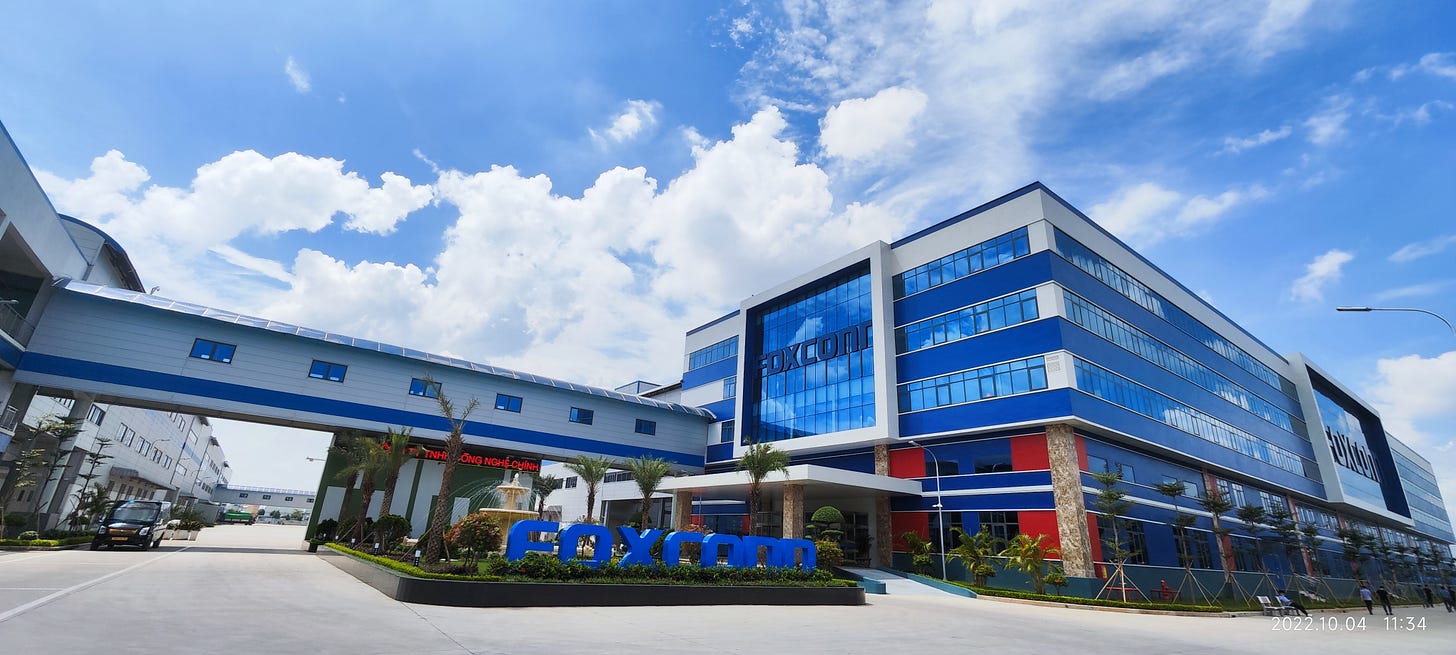The World Economic Forum (WEF) has recognized two additional Hon Hai Technology Group (Foxconn) facilities as Lighthouse factories, reinforcing Foxconn's role as a leader in advanced manufacturing and sustainability, according to a company press release.
Foxconn Industrial Internet's (Fii) Bac Giang Province facility marks a significant milestone as Vietnam’s first WEF Lighthouse factory, while the Guanlan facility in Shenzhen, China, has been named Foxconn’s first Sustainable Lighthouse factory. These new additions bring the Group's total to eight Lighthouse factories globally, joining the ranks of its previous sites in Shenzhen Longhua, Zhengzhou, Wuhan, Chengdu, and Taoyuan.
The WEF’s Lighthouse network highlights factories that demonstrate the transformative impact of Fourth Industrial Revolution (4IR) technologies such as artificial intelligence (AI), Internet of Things (IoT), and advanced digitalization. Both the Vietnam and China facilities exemplify how efficient manufacturing can align with sustainability goals, a model that Foxconn aims to replicate across its global operations to accelerate smart manufacturing and promote industry-wide digital transformation.
The Bac Giang factory in Vietnam, recognized as the country's first Lighthouse facility, serves as a blueprint for multinational companies in their global expansion efforts. According to the WEF, Foxconn’s Vietnam site successfully tackled initial challenges, including dependency on imported materials, by fostering local talent and deploying over 40 4IR use cases, such as AI-driven automation and advanced planning systems. These innovations led to a remarkable 190% increase in labor productivity, a 99.5% on-time delivery rate, and a 45% reduction in manufacturing costs.
Foxconn's Vietnam facility integrates AI, IoT, and big data to enhance end-to-end management, offering a flexible production model that addresses global demands for diverse and small-batch production. This approach ensures the facility remains agile in overcoming cross-border challenges while meeting the evolving needs of the global electronics market.
In China, Foxconn Industrial Internet’s Shenzhen Guanlan facility received the WEF’s Sustainable Lighthouse designation for its leadership in integrating cutting-edge technologies with sustainability practices. The factory’s deployment of AI and IoT technologies to optimize recycling, track carbon footprints, and drive innovation in sustainable manufacturing resulted in a 42% reduction in Scope 3 emissions and a 24% reduction in Scope 1 and 2 emissions. Additionally, the site increased its use of recycled materials to an impressive 55%–75%.
Foxconn’s expanding Lighthouse network not only underscores its commitment to operational excellence but also its role in shaping the future of sustainable manufacturing. By scaling these innovative practices across its global base, Foxconn is setting new benchmarks for both efficiency and environmental stewardship.



